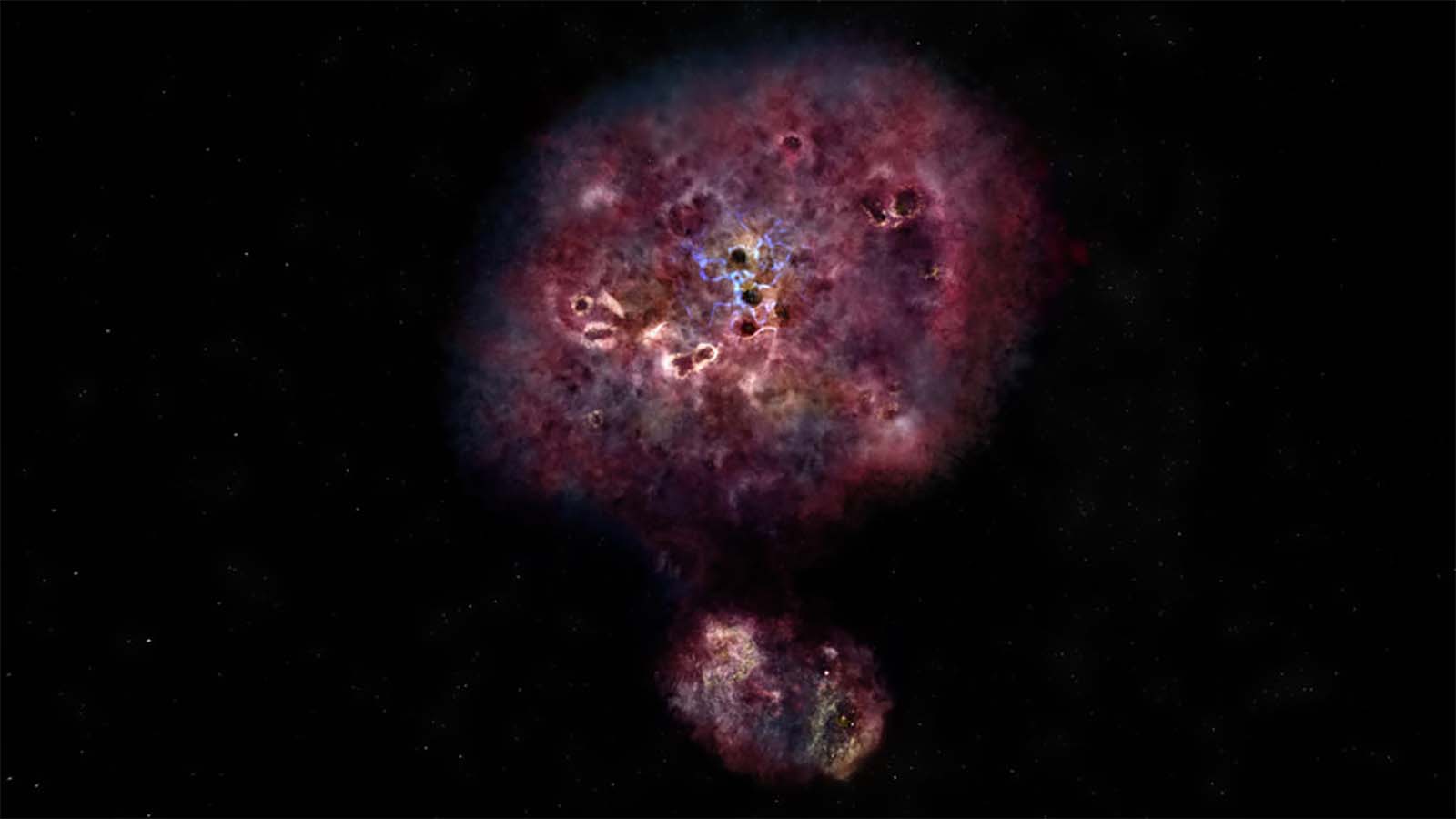Dawn of the universe might have been bursting with galaxies now hidden by dust
Newly discovered galaxies are nearly as old as the universe itself

Studying galaxies in the night sky is an exercise in time travel, since the light we are seeing represents how things looked in the past, sometimes even billions of years ago. So studying the very farthest galaxies from us can clue us in on what the early universe was like – and if two newly discovered galaxies are any indication, the cosmic dawn could have been a lot more lively than anyone realized.
The new galaxies were discovered by accident. Usually, when astronomers go looking for really old objects in space, they look for those that are very red-shifted, since objects moving away from the observer effectively pull the light they emit into longer wavelengths, thus appearing redder. What astronomers don't typically do, though, is study what appears to be empty space.
Now, after unexpected emissions appeared seemingly out of nowhere next to the red-shifted galaxies astronomer Yoshinobu Fudamoto was observing with the Atacama Large Millimeter/submillimeter Array (ALMA), that might have to change.
All that empty space could be full of the oldest galaxies in the universe, shrouded by cosmic dust.
Fudamoto, from Waseda University and the National Astronomical Observatory of Japan, and an international team of astronomers who helped confirm his findings explained in a paper published this week in the journal Nature that the two new galaxies upend what we thought about the early universe.
"These new galaxies were missed not because they are extremely rare, but only because they are completely dust-obscured," Fudamoto said.
And since astronomers believed that galaxies in the early universe weren't typically blocked by cosmic dust, "It is possible that we have been missing up to one out of every five galaxies in the early universe so far," Fudamoto added.
Sign up for breaking news, reviews, opinion, top tech deals, and more.
The problem with dust is that it can absorb UV radiation, which telescopes like the Hubble Space Telescope use to find objects in space that might not be detectable in the visible light spectrum.
Astronomers have started using telescopes like ALMA, though, to probe sub-millimeter wavelengths of light, those shifted far into the red part of the spectrum, which allows them to identify objects obscured by dust by detecting the dust that absorbed the UV light instead.
Now, they might have to start using these submillimeter telescopes in blind surveys of the night sky to see what else might have been missed.
Analysis: The James Webb Space Telescope is becoming more important by the day
Given our current capabilities, there is only so much we can see or do, but soon we'll hopefully be getting a huge upgrade in our capacity to look into the night sky.
The James Webb Space Telescope (JWST), currently on its way to French Guiana in preparation of its December 2021 launch, is the most advanced space telescope ever constructed.
When it deploys about 1.5 million km from Earth, it will have the most unobstructed view of the cosmos of any telescope we've ever created, which will give its 18-meter mirror array that much more light to work with.
It is also built from the ground up specifically to detect infrared light, which Hubble largely cannot do – which is why it could be missing all those dust-obscured galaxies – making it essential to our study of the early universe.
"Completing our census of early galaxies with the currently missing dust-obscured galaxies, like the ones we found this time, will be one of the main objectives of JWST and ALMA surveys in the near future," said the University of Geneva's Pascal Oesch, one of the co-authors of the paper.
Add one more to the list of things that the JWST is going to have to do once it gets up there. No pressure.

John (He/Him) is the Components Editor here at TechRadar and he is also a programmer, gamer, activist, and Brooklyn College alum currently living in Brooklyn, NY.
Named by the CTA as a CES 2020 Media Trailblazer for his science and technology reporting, John specializes in all areas of computer science, including industry news, hardware reviews, PC gaming, as well as general science writing and the social impact of the tech industry.
You can find him online on Bluesky @johnloeffler.bsky.social